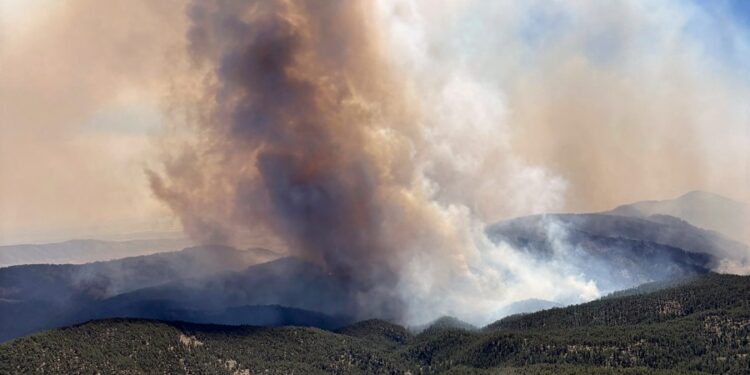
Exposure to the tiny pollutants emitted by wildfires may be increasing the older adult population’s odds of dementia diagnosis, a new study has found.
Among more than 1.2 million people tracked over a decade in Southern California, each microgram-per-cubic-meter rise in wildfire-borne particulate matter (PM 2.5) exposure was associated with an 18 percent increase in the odds of dementia diagnosis.
Population members younger than 75 years old, individuals from racial and ethnic minority groups and people who resided in high-poverty areas exhibited heightened responses to this type of pollution, according to the study, published on Monday in JAMA Neurology.
Prior research has already suggested that long-term exposure to PM 2.5 — fine particles present in the emissions of fossil fuel combustion — is associated with incident dementia: the first visit in which a patient receives a clinical diagnosis of this condition.
But the study authors sought to explore the specific links between both long-term wildfire and non-wildfire PM 2.5 exposure with incident dementia among older adults, as wildfire events become more intense and frequent in the U.S. and around the world.
To do so, the scientists explored the electronic health records of Kaiser Permanente Southern California members aged 60 years and older, from January 2008 to December 2019.
They calculated exposure levels by looking at three-year rolling mean wildfire and non-wildfire PM 2.5 levels in member census tracts before and during the study period. This data, they explained, is updated quarterly and compiled through monitoring, remote-sensing data and statistical tools.
Of the total 1.2 million individuals deemed eligible for the study, nearly 81,000 Kaiser Permanente members — or 6.6 percent — received dementia diagnoses during follow-up clinical visits.
The scientists determined that for every microgram-per-cubic meter increase in the three-year mean concentration of wildfire-borne PM 2.5, eligible members endured an 18 percent surge in their risk of dementia diagnosis.
In comparison, for every microgram-per-cubic meter rise in non-wildfire PM 2.5 — fine particulate pollution from other sources, such as fossil fuel production or transportation — participants only show a 1 percent increase in odds.
Analyzing these differences, the authors said that the results were in keeping with existing theories “suggesting unique toxic neurologic effects of wildfire PM 2.5.”
Particles emitted by wildfires, they explained, are produced by the combustion of organic materials at much higher temperatures and also contain higher concentrations of pro-inflammatory compounds.
While the scientists found that wildfire PM 2.5 exposure was only associated with increased dementia diagnosis in individuals younger than 75, they noted that members over the age of 75 may be spending less time outdoors.
In addition, they hypothesized that patients most susceptible to wildfire PM 2.5 exposure may have died sooner and were therefore not present in the study pool.
As far as differences in race, ethnicity and poverty factors were concerned, the researchers noted that “in the U.S., environmental exposures disproportionately impact racially and economically marginalized groups.”
“Lower-quality housing may increase smoke infiltration, and poorer families may have constrained economic choices that limit their ability to pay for air filtration systems to improve air quality during smoke events,” the authors stated.
Members of such groups also may endure more intense physiological responses environmental exposures and have worse baseline health — conditions that the authors attributed to “the cumulative result of discrimination and chronic exposure to psychosocial stressors.”






